« Trouble Afoot | Front Page | Infestation - carving is under way »
Auctioneering results!
Posted by Dave Bull on March 28, 2013 [Permalink]
After all the excitement of the bidding the other night, it was a relief to finally receive the boxes today. But this moment too has plenty of tension ... will the contents be useful enough to justify the high price?
We received two boxes - as expected - and I had a look at the one marked 'woodblocks' first:
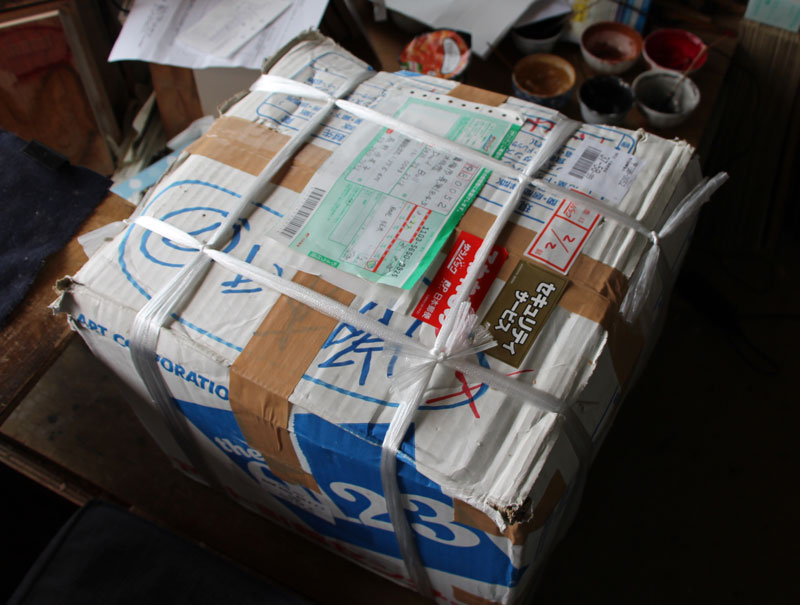
And we got our first shock within seconds of opening it up.
Prints. A stack of prints ... perhaps around a hundred of them. Beautiful early/mid-Showa period senshafuda prints, some small and simple, others large and complex.
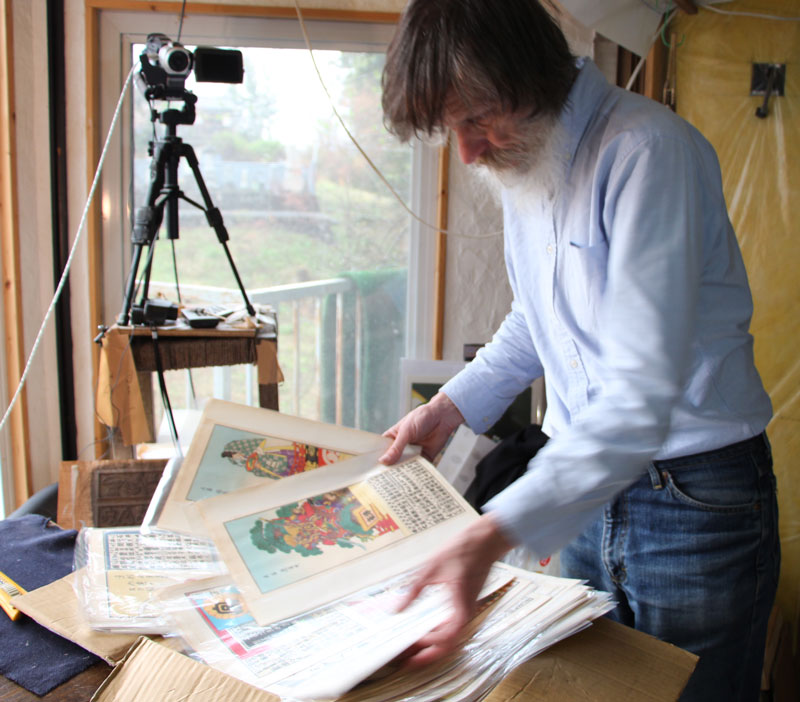
And all beautifully printed ...
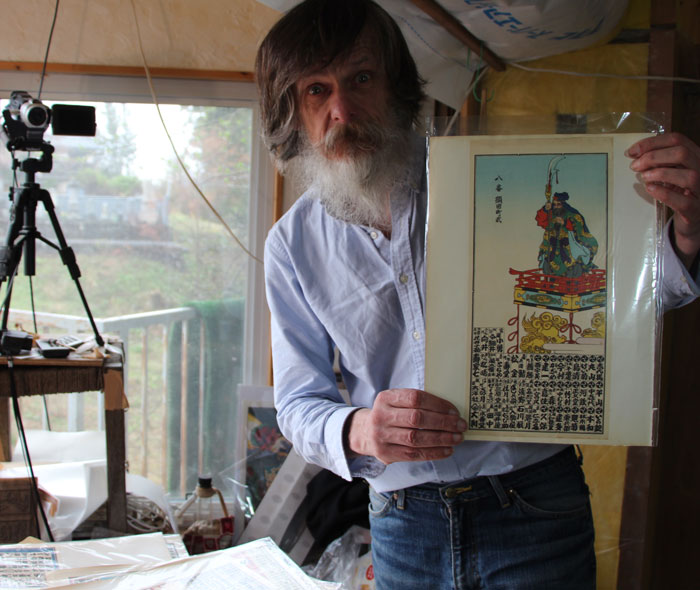
Well, this was a nice bonus, right off the bat!
Below the stack of prints were blocks and more blocks. Many of them seem to be for printing single small senshafuda, but others are more complex, with both key and colour blocks:
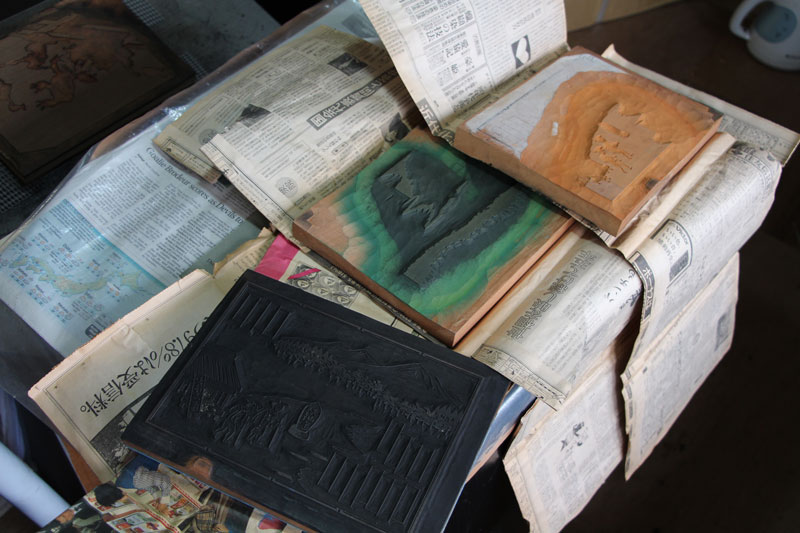
Very nicely carved ...
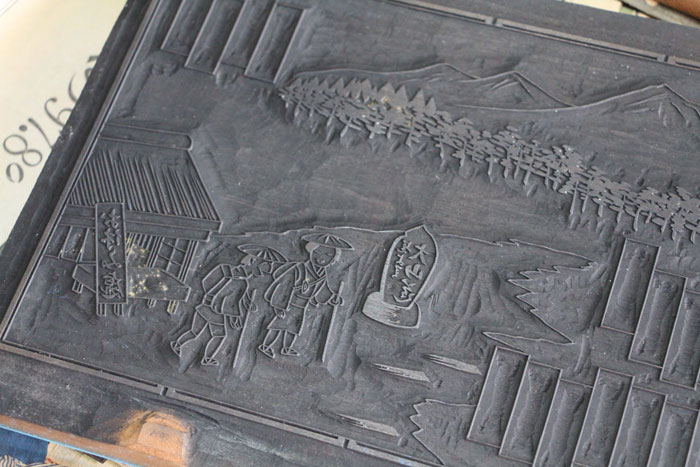
This print shop also seems to have taken orders for Ex Libris, as there are blocks for those small prints too:
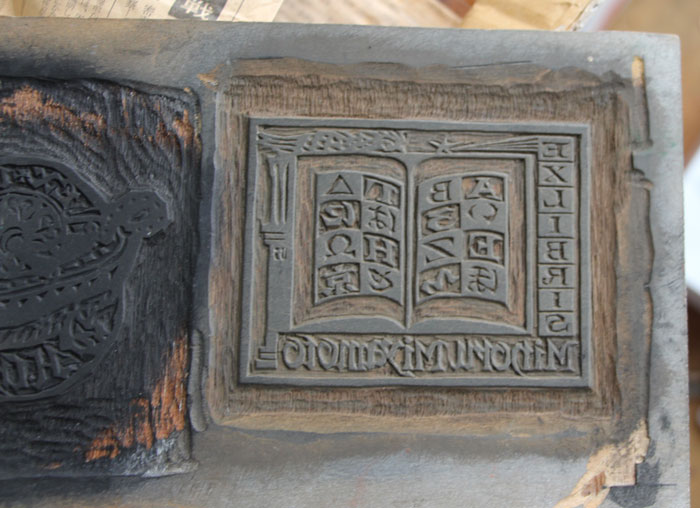
We'll have to go through all these blocks one by one when we get a bit of time, and see just what we have, but for now, the other box is calling pretty loudly ... 'Open me, please!'
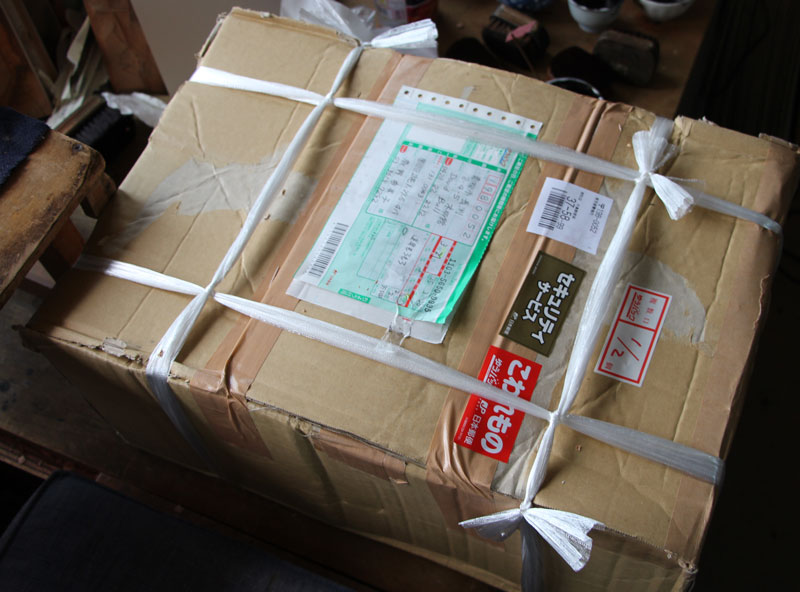
And no sooner is the top pulled back than the first treasure comes to light:
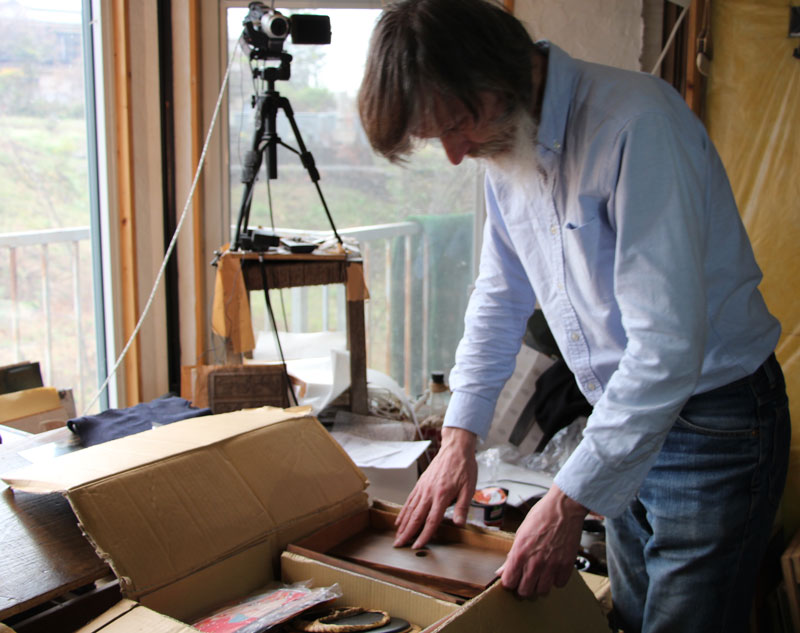
It's a baren ('shin' coil and 'ategawa' backing disc) made by the famous Murata Katsumaro. And it seems to have barely been used, as the ategawa is only slightly dimpled, and the coil is completely unworn.
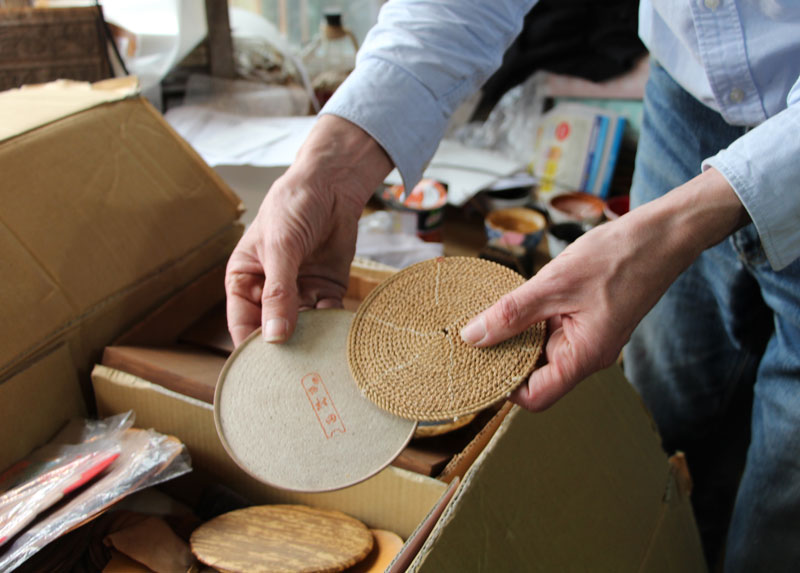
Let's get some of that stuff out of there and spread it on my workbench to see what we have ...

There are five 'complete' hon barens: the one by Murata, one that appears to be made by Kubota-san (one of Adachi's printers who makes barens as a side business) and three of a 'generic' style common among printers making barens for themselves.
In addition to these five there are two completed coils ready for matching up with a backing disc, and a length of partially woven coil (the first stage of the process). At the top right of this photo is a stack of the very thin washi that is used for making the backing discs. This is stained a deep tone by the persimmon juice used to strengthen it. Each ategawa needs around 45~50 of these sheets, and there are many hundreds of them here ...
And as you can see, we also have a small selection of brushes (mostly unused) all branded with the 'Kintaro' mark - a long-gone maker of very high reputation.
(This still doesn't bring us within sight of the bottom of the box - but it's getting very late this evening, and I need to call it a day. I'll try and get back and extend this post sometime tomorrow ...)
But anyway ... ... Yippee!

Good morning ... time to get a few more of the photos onto this page ...
The dark brown paper is an extremely thin washi, coated with persimmon juice. Around 50 or so of these sheets are what form the black circular backing disc of a baren, laid up one per day with a thin layer of glue.
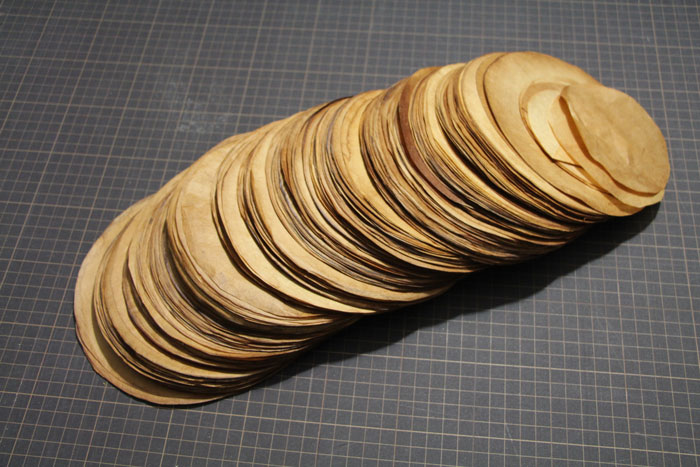
There are enough sheets here for quite a few new discs.
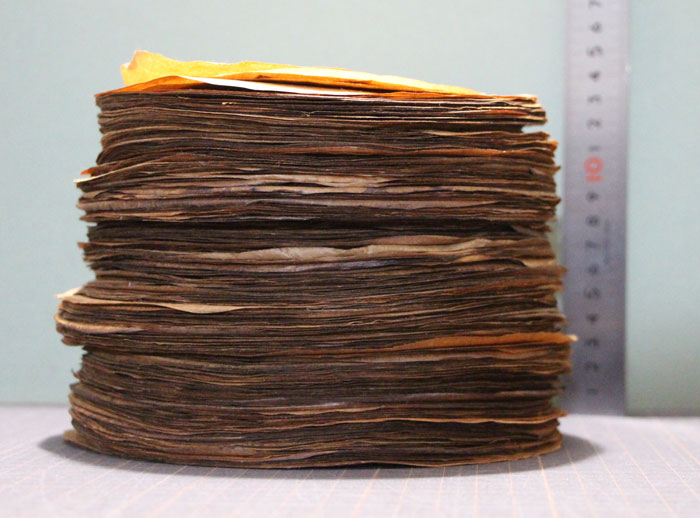
I myself certainly don't have time to 'play' with this just now, but our young printer Ayumi-san, who we met in the video I uploaded the other day, is currently learning how to make barens, and she is going to find this stuff very useful, I suspect!
And here's the main event - the four barens visible in the original photo. After their long vacation, these are going into service this afternoon! (And I'm sure they will be very happy to do so!)

This next one is the 'bonus' baren; not visible in the original auction photo, it is actually the most rare of the batch. It carries a stamp verifying that it was made by Katsumaro Murata, far and away the most respected baren maker of the 20th century.
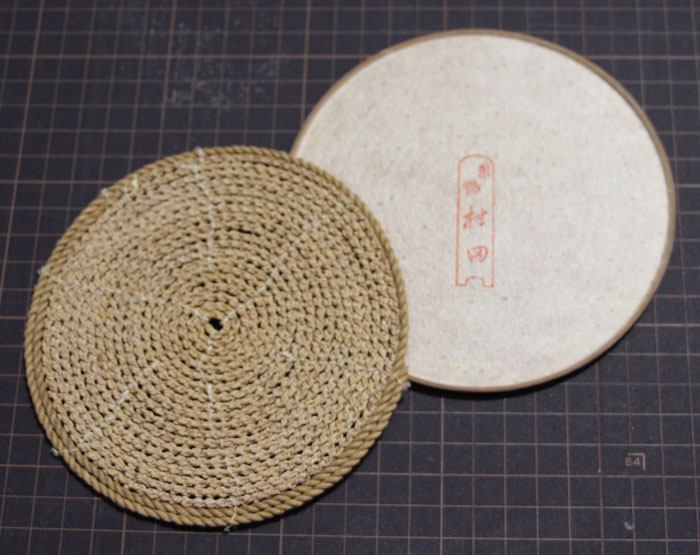
Early this morning I spoke to Goto-san (the current top baren maker) about this auction find, and he was naturally impressed and pleased by it all, but it was when he saw my photo of this item, that he really began to turn green. He has one himself, and considers it the pride of his collection ...
And then of course, we have the makings of two more barens, the internal woven bamboo coils, pretty much complete and ready to go:
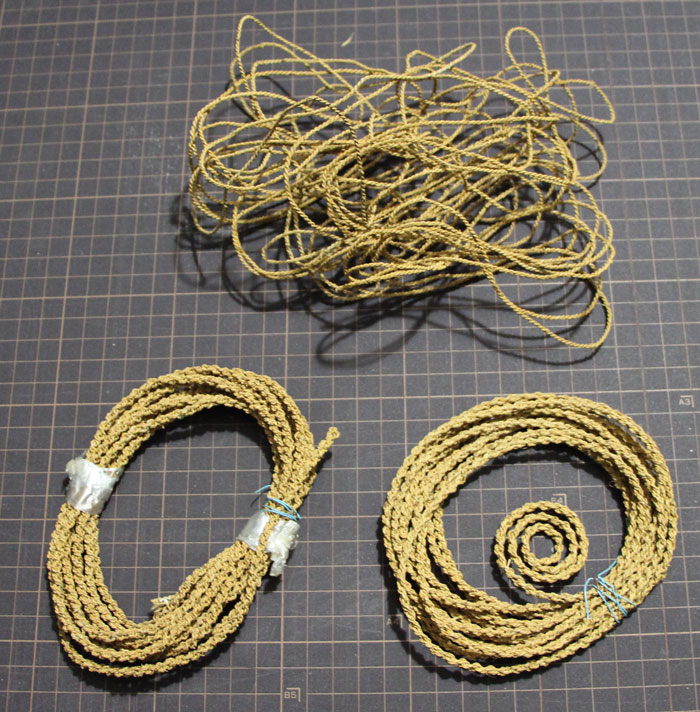
Here's a closeup. Making one of these is a staggeringly complicated job, and takes many many weeks, which is why these things are so rare and expensive ...
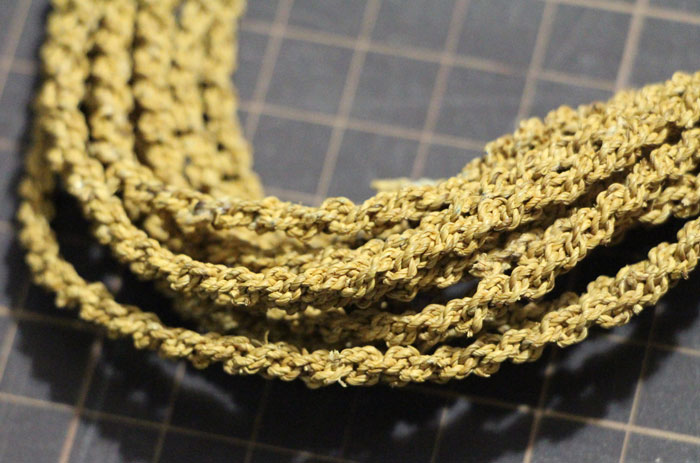
OK, it wasn't only tools in the box, there are some supplies as well - particularly pigments:

These are perfect for us, matching our own studio palette almost exactly. The quality seems very high, and they are very finely ground.
But one of them in particular is going to pose a bit of a problem for us:
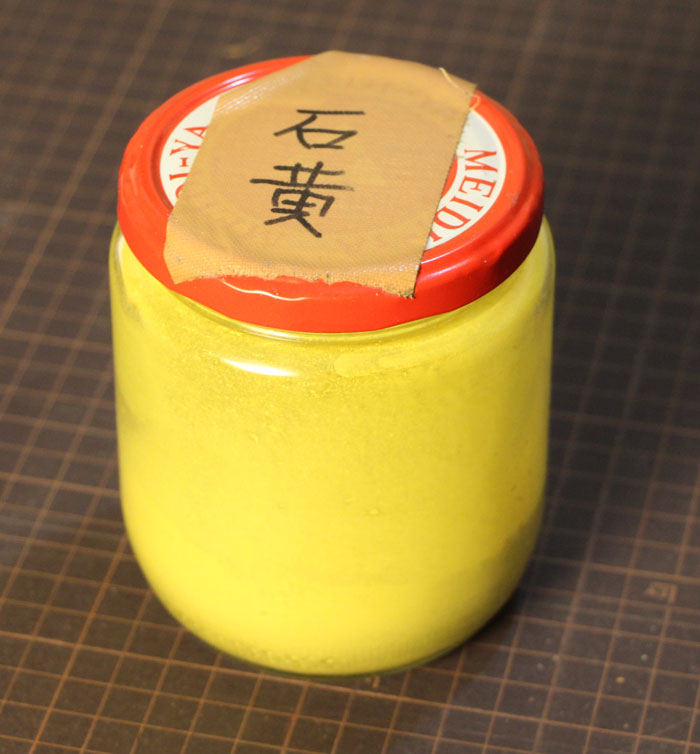
This is the pigment known as 'seki-o' - a lovely rich yellow that is perfect for ukiyo-e work. The problem is the composition: 50% sulphur, and 50% [redacted]. The reason for not naming the particular substance - a favourite of Agatha Christie - is that I do not want this page showing up on a Google search for it. Here in Japan, you must have a license - and a very good reason - for having it in your possession, and I have neither ('traditional' might be something we could get away with, but it's not a point I would wish to argue with the policemen who would come here to seize it, if they should ever learn I have some.)
Back when I worked alone, I did use this pigment in my prints (I have a package bequeathed to me by a older - now dead - printer), but since opening up the workshop to other people - notably younger women, one of whom is breast-feeding - I will not allow this to be used here.
Moving right along ... there are also a few pigments of a type that we do not use here:
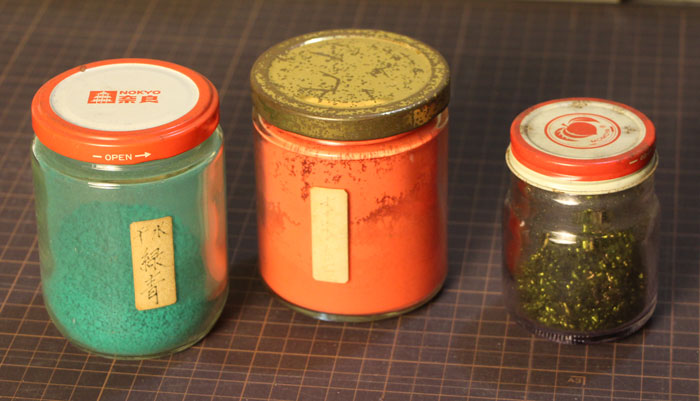
This green is a semi-opaque type, and would soon 'kill' the beauty of any print on which we used it.
And one of those jars contains a substance completely unknown to me:
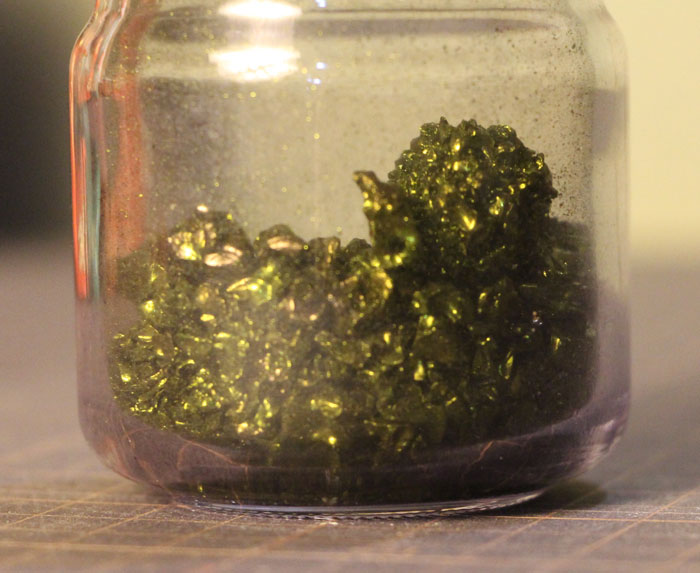
I haven't a clue what this is, and will take it to one of the older printers when I get a chance, to see if he knows what it is.
But as we dug further into the box, we found yet another layer of stuff - bags and bags of assorted pigments:
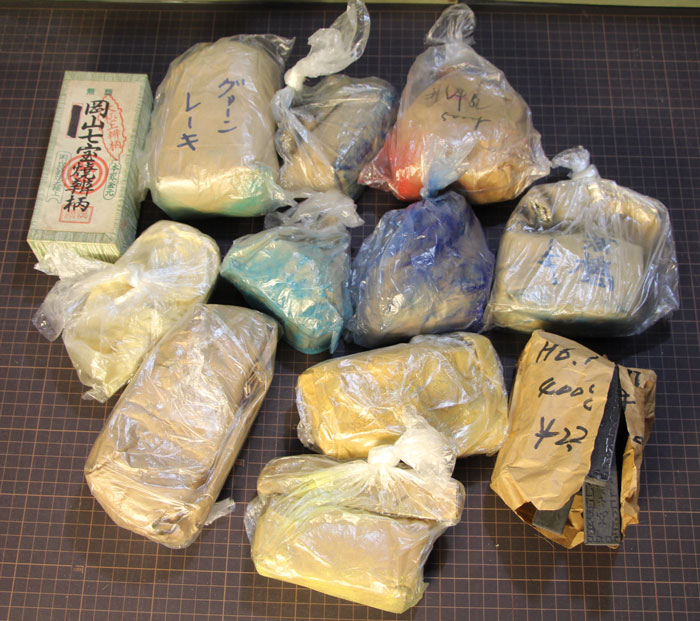
We took a peek in a few of the packs; some of them are pigments of a type that are still available, but others now can't be had (in decent quality) for love or money. This part of the box is very real treasure - just as much as the barens!
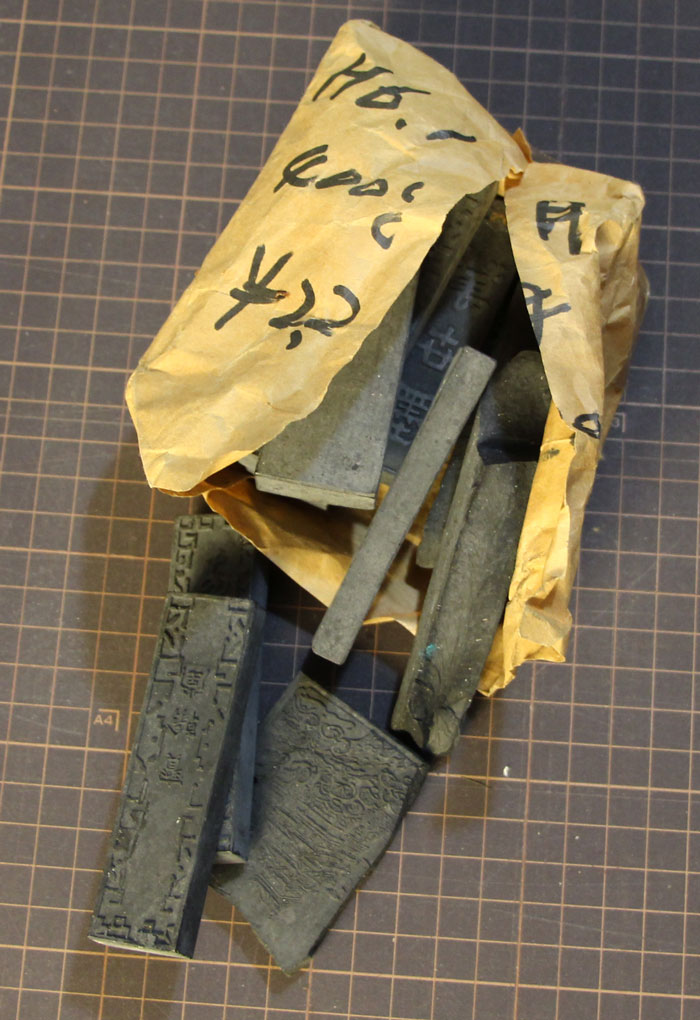
This is a little bag of ore-zumi - broken sumi sticks. These are not expensive at all. We use stuff like this to make our main supply of bokuju (liquid sumi). Smash 'em up, let them soak for a few months, then strain out the glue. It makes a wonderfully rich and thick black 'juice' ...
The last item in the pigment corner was this bag of warabi-ko (a starch made from bracken roots). It is an essential ingredient in making the baren. Those 45~ thin sheets are glued together with a paste made from this - the main attraction is that it has very little 'body' of its own, and the 44~ layers of glue don't add much to the thickness of the disc.
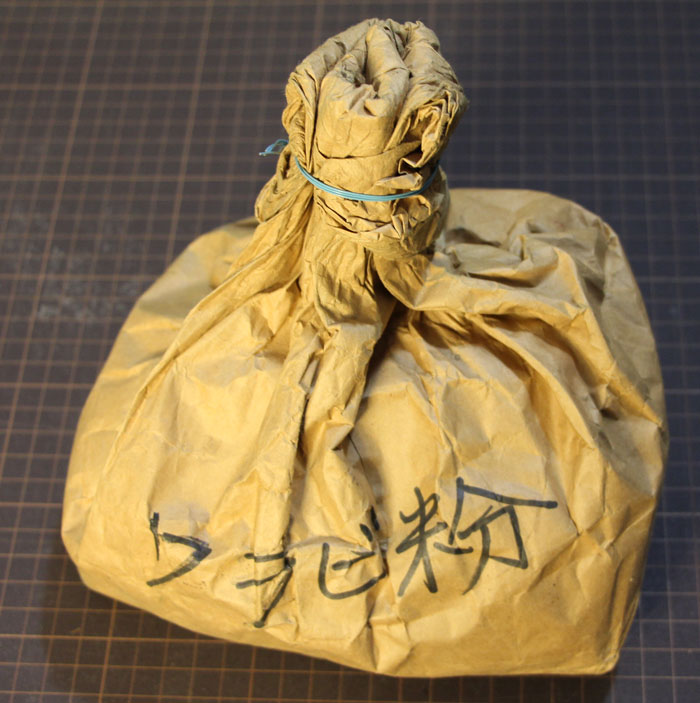
This stuff also is very difficult to find these days - most of the products marketed as 'warabi flour' are simply cornstarch.

That's about it for the useful stuff from this second box. There are a few miscellaneous items in there:
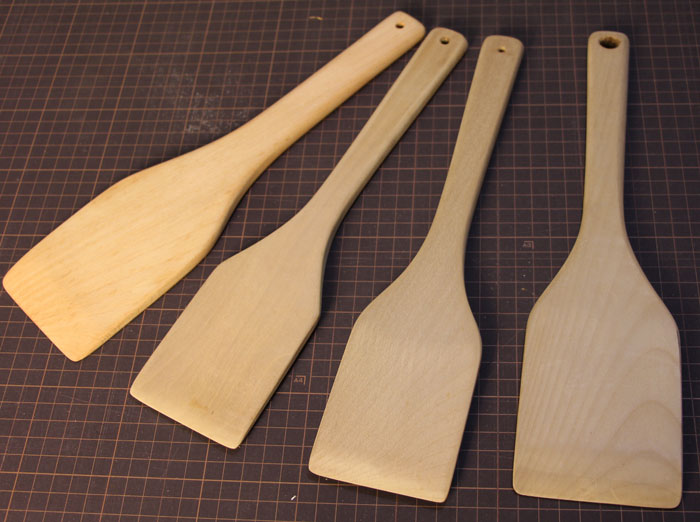
These are wooden spatulas used when laying down those thin sheets of paper one by one.

These river stones are used by the printer when tying a new cover on the baren - we use them to 'kill' the strong fibres of the bamboo skin, so that it will not tear the paper when printing.
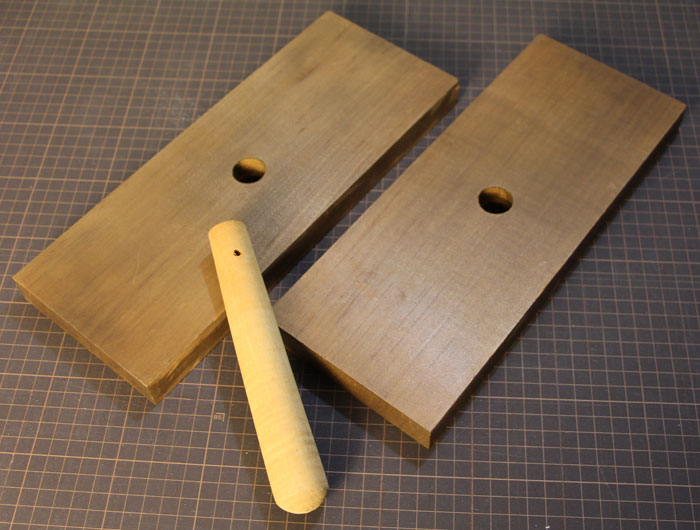
And last and least we have a couple of the 'jigs' used by the baren maker when forming the coil. I don't know how these are used, and will post something down below after I've asked Goto-san to explain a bit ...
All in all ... quite a treasure box. And now back to perusing Yahoo Auctions each day to see what might be coming next! :-)

[Update: I have prepared an 'Unboxing' video ...]
Added by: Barbara Mason on March 28, 2013, 2:51 am
What a treasure trove! And I am sure you will be able to sell the prints eventually as well...there is a gallery in Seattle that deals in Moku Hanga, the Collum Gallery...it might be a good outlet for these. These brushes and barens seem well worth the money
Congrats
Barbara

Added by: Albert A on March 28, 2013, 3:15 am
I have to admit, I thought it was a bit crazy to spend this kind of money on something that you can only see in low-res pictures, but I'm glad it all worked out!

Added by: Michael Kohne on March 28, 2013, 3:19 am
Congratulations! I'm glad the auction worked out for you.

Added by: Anita on March 28, 2013, 5:21 am
Watching the webcam yesterday, I was excited to see you with packages but then heard much talk of 'marshmallows' (my young friends also loved that clever Chibi Hero) and assumed those boxes were not the anticipated treasure. I am delighted to see it has arrived and there are five barens and all those other useful things!

Added by: Dave on March 28, 2013, 7:52 am
low-res pictures ...
Actually, there was very little risk involved on this auction. Even with the low-res, those four (visible) barens were clearly the 'real thing'. The shape looked right, and the presence of the surrounding parts for making them, which could not possibly be present in any other circumstances, confirmed that these were tools from a pro printer's workshop.
The rest was simple arithmetic. At current prices, 4 hon barens have a replacement cost of 320,000 yen (4 @ 80,000), and that was the basis for my bid. Everything else that might be in the boxes was irrelevant; if it turned out useful or valuable, that would be a bonus.
As for 'old' or 'worn out' these are not a factor. Although a baren does wear down over a great many years, these are clearly tools that were in use right up to the point where the workshop shut down, for whatever reason.
talk of marshmallows ...
Were we talking English at that point? Did you understand the 'story' I was telling them? Well, rather than relate it here, I think I'll tell it properly, in next weekend's 'A Story A Week'. If you can wait that long ... (for a hint, you can Google 'Stanford marshmallow experiment' to learn more ...)

Added by: Margaret Maloney on March 29, 2013, 5:04 am
How wonderful! I am very glad the lot revealed such treasures.

Added by: Franz Rogar on March 29, 2013, 7:52 pm
Congratulations!
The prints and the hon barens are amazing and the fifth one a treasure.
BTW, the pigment you don't know seems, to me, like pyrite (a sulfide) [AKA "fools gold"] but it's hard to tell in a bootle as the most direct way to know it is its glare.

Added by: sue kallaugher on March 29, 2013, 11:46 pm
The box of tricks couldn't have found a better home and thanks for sharing the story with everyone Dave.

Add Your Input